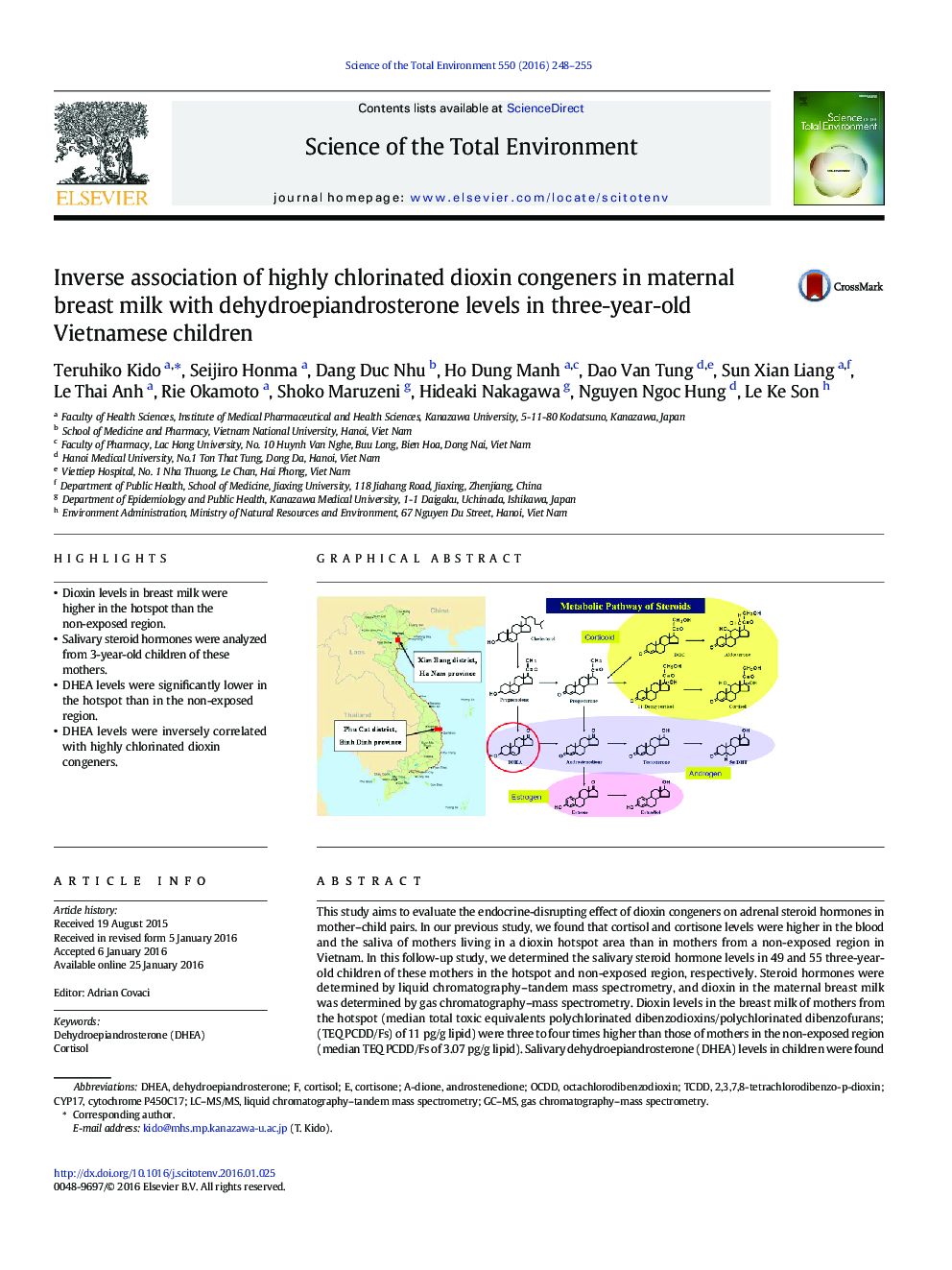| Article ID | Journal | Published Year | Pages | File Type |
|---|---|---|---|---|
| 6322837 | Science of The Total Environment | 2016 | 8 Pages |
â¢Dioxin levels in breast milk were higher in the hotspot than the non-exposed region.â¢Salivary steroid hormones were analyzed from 3-year-old children of these mothers.â¢DHEA levels were significantly lower in the hotspot than in the non-exposed region.â¢DHEA levels were inversely correlated with highly chlorinated dioxin congeners.
This study aims to evaluate the endocrine-disrupting effect of dioxin congeners on adrenal steroid hormones in mother-child pairs. In our previous study, we found that cortisol and cortisone levels were higher in the blood and the saliva of mothers living in a dioxin hotspot area than in mothers from a non-exposed region in Vietnam. In this follow-up study, we determined the salivary steroid hormone levels in 49 and 55 three-year-old children of these mothers in the hotspot and non-exposed region, respectively. Steroid hormones were determined by liquid chromatography-tandem mass spectrometry, and dioxin in the maternal breast milk was determined by gas chromatography-mass spectrometry. Dioxin levels in the breast milk of mothers from the hotspot (median total toxic equivalents polychlorinated dibenzodioxins/polychlorinated dibenzofurans; (TEQ PCDD/Fs) of 11Â pg/g lipid) were three to four times higher than those of mothers in the non-exposed region (median TEQ PCDD/Fs of 3.07Â pg/g lipid). Salivary dehydroepiandrosterone (DHEA) levels in children were found to be significantly lower in the hotspot than in the non-exposed region, while cortisol and cortisone levels were not different between the two regions. Highly chlorinated dioxin congeners, such as octacholorodibenzodioxin (OCDD), 1,2,3,4,6,7,8-heptacholorodibenzodioxin (HpCDD) and 1,2,3,4 (or 6), 7,8-hexachlorodibenzodioxin Hx(CDD), showed stronger inverse associations with the children's salivary DHEA than other lowly chlorinated dioxin congeners. Glucocorticoid levels in the mothers exhibited a significantly positive correlation with OCDD and HpCDD/F (polychlorinated dibenzofurans). In conclusion, highly chlorinated dioxin congeners are more strongly correlated with endocrine-disrupting effects on adrenal hormones, resulting in high cortisol levels in the mothers and low DHEA levels in their three-year-old children.
Graphical abstractDownload high-res image (269KB)Download full-size image
